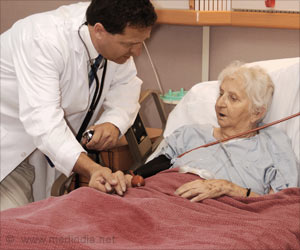
‘End-of-life care for prisoners is provided by professional healthcare workers and also by fellow inmates to address their psychosocial and emotional needs.’
Tweet it Now
In 15 years, from 1995 to 2010, the U.S. prison population experienced a 282 percent increase in the number of inmates 55 and older. During that time, hospice care in prisons has increased, but the systems in place are not consistent across the country. Loeb and Rachel K. Wion, a nursing Ph.D. student, analyzed 19 peer-reviewed research articles about EOL or palliative care for prisoners published between 2002 and 2014. All but one of these articles was conducted in the U.S. The report is published in the American Journal of Nursing.
"It was surprising to find that family was clearly absent from these studies," said Loeb, also director of the Ph.D. program in nursing. "There was mention of prisoners receiving family visits, but there was no family perspective on end-of-life care in prison."
The researchers found that the number of designated hospice beds in prisons varied from as low as one bed to a high of "unlimited," although nine available hospice beds was the average.
EOL care for prisoners is provided by a wide variety of people, from fellow inmates to professional healthcare workers, and the care itself ranged from addressing psychosocial and emotional needs to provide healthcare interventions. Attitudes toward hospice care for prisoners varied among prison staff, with corrections officers expressing the most resistance. However, corrections officers who had substantial hospice exposure were more supportive than those with little or no exposure.
Advertisement
"Hospice coordinators felt that EOL care had a positive impact on the general prison population as well as on dying prisoners because it promoted compassion and presented an alternative to the view of the prison system as entirely punitive -- showing it to be more humane and caring, supportive of the dignity of the dying patient, and encouraging trust between prison staff and inmates," wrote Wion and Loeb.
Advertisement
Source-Eurekalert









